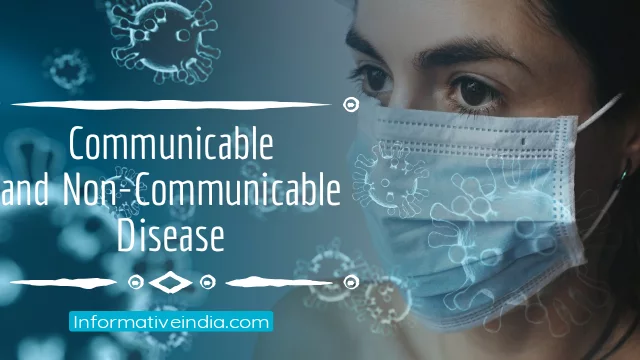Contents
Communicable and Non-communicable Disease
1. Communicable Disease
Communicable disease are those which are caused by the attack of bacteria, virus, protozoa, fungi etc. in the body.
These are transmitted through the agency of air, water, insects, physical contacts etc. from one person to another.
Every disease has some of its specific symptoms. e.g. Tuberculosis, cholera, diphtheria, leprosy, tetanus, typhoid, plague, small pox, influenza, AIDS (Acquired immuno-deficiency syndrome) Malaria, etc.
2. Non-communicable Disease
Non-communicable Diseases are those which cannot be transmitted from one person to another.
Some of these disease are caused by the deficiency of minerals and vitamins in the diet.
Deficiency of Vitamin A results in night blindness and xerophthalmia, Vitamin-B Beri Beri, Vitamin C-Scurvy, Vitamin D-Rickets and Osteomalacia etc.
Deficiency of Iron causes Anemia, Iodine causes Goitre.
Other Non-communicable Diseases are hypertension (High Blood Pressure), Aatherosclerosis (Arteries become hard and narrow as a result-heart muscles do not get adequate supply of blood), Diabetes mellitus (presence of glucose in the urine), Allergy (hypersensitivity of tissues), Cancer (uncontrolled growth of cells) etc.
You May Also Like —
- What are the Differences Between DNA and RNA?
- Write a Short Note on Circulatory System of Man
- Write a Short Note on Vascular System of Heart.
- What are the Fertilizers and It’s Types?
- What Do You Mean By Environment and Conservation?
- Define Kinetic Energy and Potential Energy
- What Do You Mean By Artificial Satellite?
- What is Pollution? Explain the Pollutants Air, Water and Soil
- Explain the Term Genetic Engineering. What are It’s Uses?
- What is Green House Effect? Explain.




